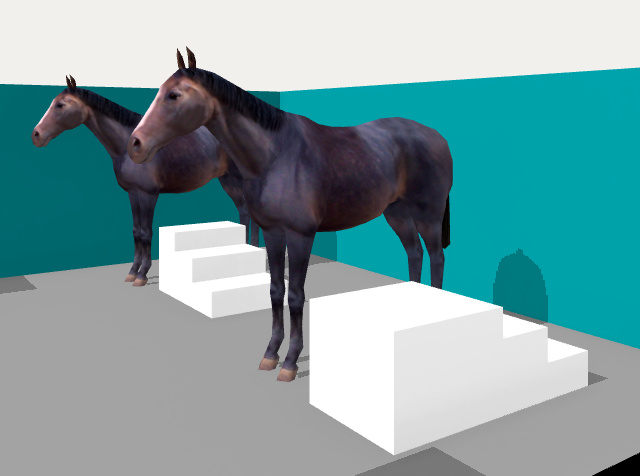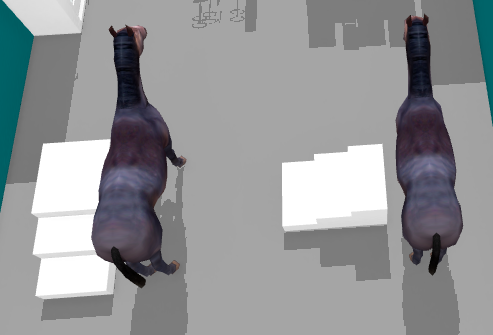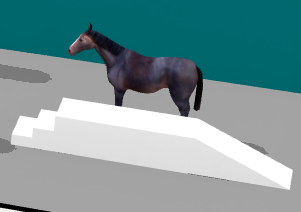My dad built me a nice three-step, wooden mounting block for Christmas. I know where I’m going to put it, and as it’s fairly heavy and substantial (but can be moved if/when absolutely needed), I want to make sure it’s in the best position.
So, the way I figure it, there are three possibilities:
- Steps perpendicular to horse so that I walk up them and am facing the horse straight on.
- Steps parallel to the horse, ascending from front (direction of head/shoulder) to stirrup area so that I’m facing the hindquarters of the horse as I go up the steps.
- Steps parallel to the horse, ascending from back (hindquarters) to stirrup area so that I’m facing the front of the horse as I go up the steps.
Does it matter? My inkling is to just position it so the steps are perpendicular to the horse.
Am I overthinking this? Probably. Just wondering if anyone has a preference and why. Thanks!






 I can assure you the pony has mounting block manners now and would never argue that it isn’t incredibly important.
I can assure you the pony has mounting block manners now and would never argue that it isn’t incredibly important.